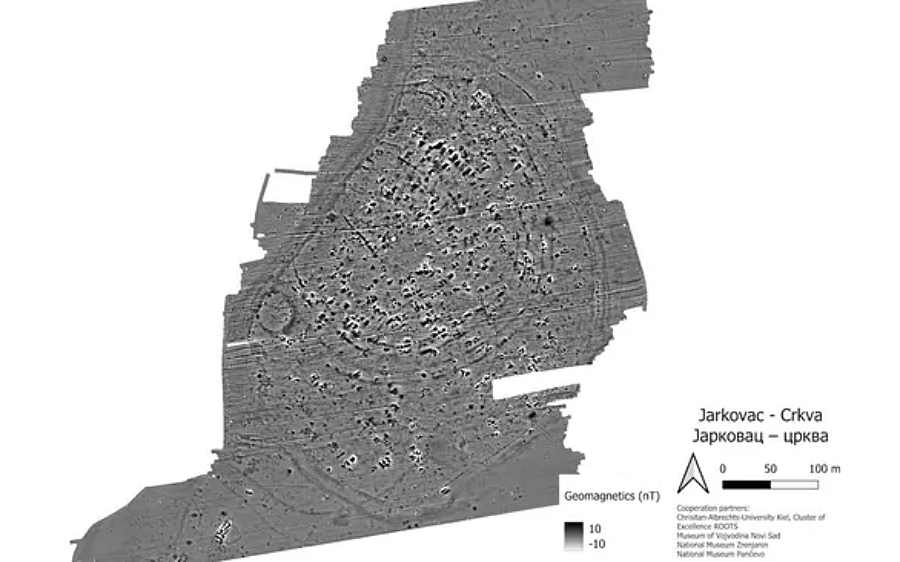![]() Archaeologists fully mapped out a previously unknown settlement in Serbia. (Image credit: Cluster ROOOTS/Museum of Vojvodina Novi Sad/National Museum Zrenjanin/National Museum Pančevo)
Archaeologists fully mapped out a previously unknown settlement in Serbia. (Image credit: Cluster ROOOTS/Museum of Vojvodina Novi Sad/National Museum Zrenjanin/National Museum Pančevo)
Sun 12 May 2024:
Archaeologists have uncovered a significant prehistoric settlement in northern Serbia’s Banat region, dating back around 7,000 years. This discovery sheds new light on the region’s prehistoric past, as large Late Neolithic settlements are rare in this area.
Led by Martin Furholt from the Institute of Prehistoric and Protohistoric Archaeology (IPPA) at Kiel University in Germany, the research team made this remarkable find near the Tamis River in northeastern Serbia.
“This discovery is of outstanding importance, as hardly any larger Late Neolithic settlements are known in the Serbian Banat region,” research leader Martin Furholt from the Institute of Prehistoric and Protohistoric Archaeology (IPPA) at Kiel University in Germany, said in a press release.
The village, located in the Banat area, offers valuable insights into ancient societies in the region. Ongoing investigations aim to deepen our understanding of this prehistoric settlement.
Initial findings reveal that the settlement spans approximately 11-13 hectares and is surrounded by four to six ditches on each side. This discovery marks a significant milestone in uncovering the ancient history of the Banat region.
“A settlement of this size is spectacular. The geophysical data also gives us a clear idea of the structure of the site 7,000 years ago,” Fynn Wilkes, co-team leader of the German-Serbian research team with the IPPA, said in the release.

During the mapping of the site, archaeologists also found some artefacts that show a link to the Vinca culture, which dates back to between 5400 BC and 4400 BC. The Vinca culture is a prehistoric group that occupied a region of southeastern-central Europe during this period.
Its area today predominantly includes Serbia and Kosovo, as well as portions of Hungary, Romania, Bulgaria, Croatia, Bosnia, Montenegro, and North Macedonia. Among other distinguishing features, the culture is noted for producing some of the greatest towns in prehistoric Europe.
The newly discovered settlement is also related with the Vinca civilization, according to the material discovered at the site. The site appears to have been heavily influenced by the nearby Banat prehistoric culture.
Further examinations are ongoing at the site, but the finding of the settlement will greatly assist researchers in better understanding prehistoric communities in the region.
“This is also remarkable, as only a few settlements with material from the Banat culture are known from what is now Serbia,” Wilkes said.
SOURCE: INDEPENDENT PRESS AND NEWS AGENCIES
______________________________________________________________
FOLLOW INDEPENDENT PRESS:
WhatsApp CHANNEL
https://whatsapp.com/channel/0029VaAtNxX8fewmiFmN7N22
![]()
TWITTER (CLICK HERE)
https://twitter.com/IpIndependent
FACEBOOK (CLICK HERE)
https://web.facebook.com/ipindependent
YOUTUBE (CLICK HERE)
https://www.youtube.com/@ipindependent
Think your friends would be interested? Share this story!





